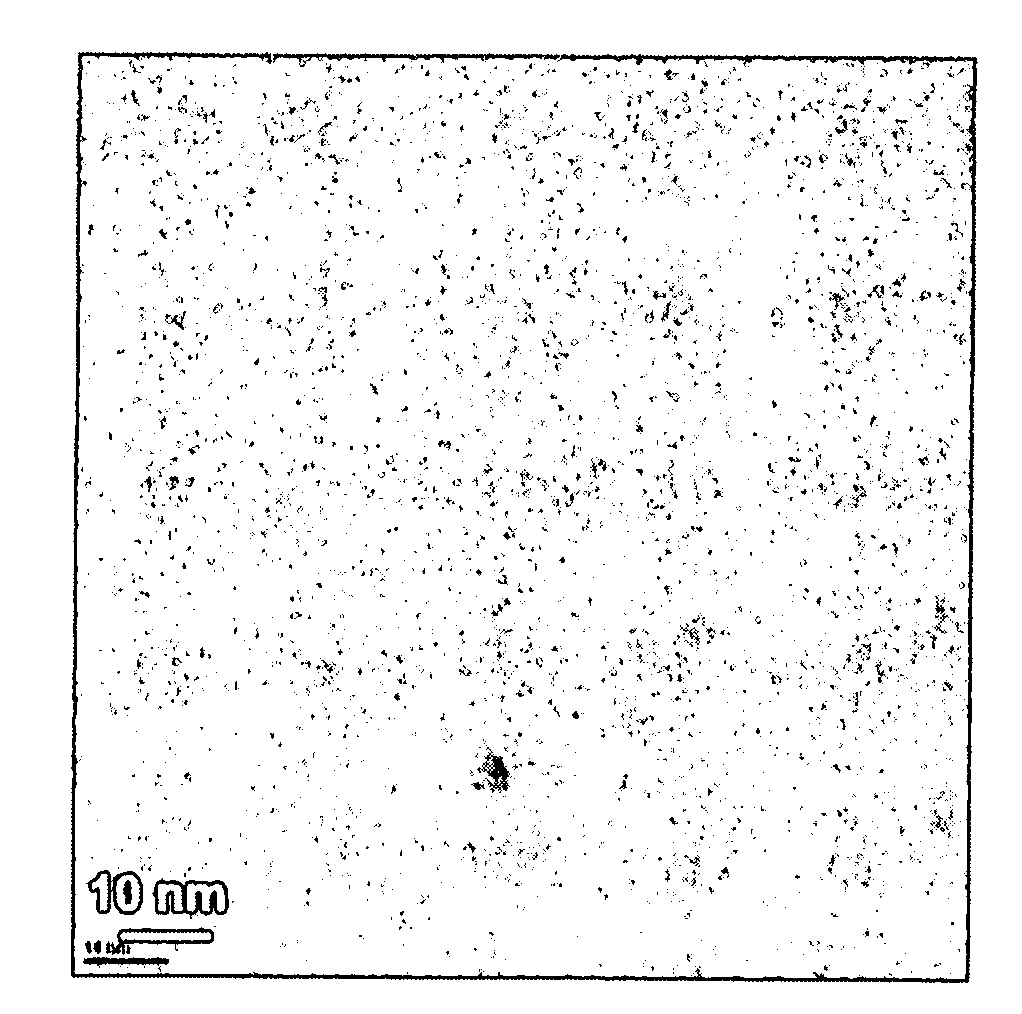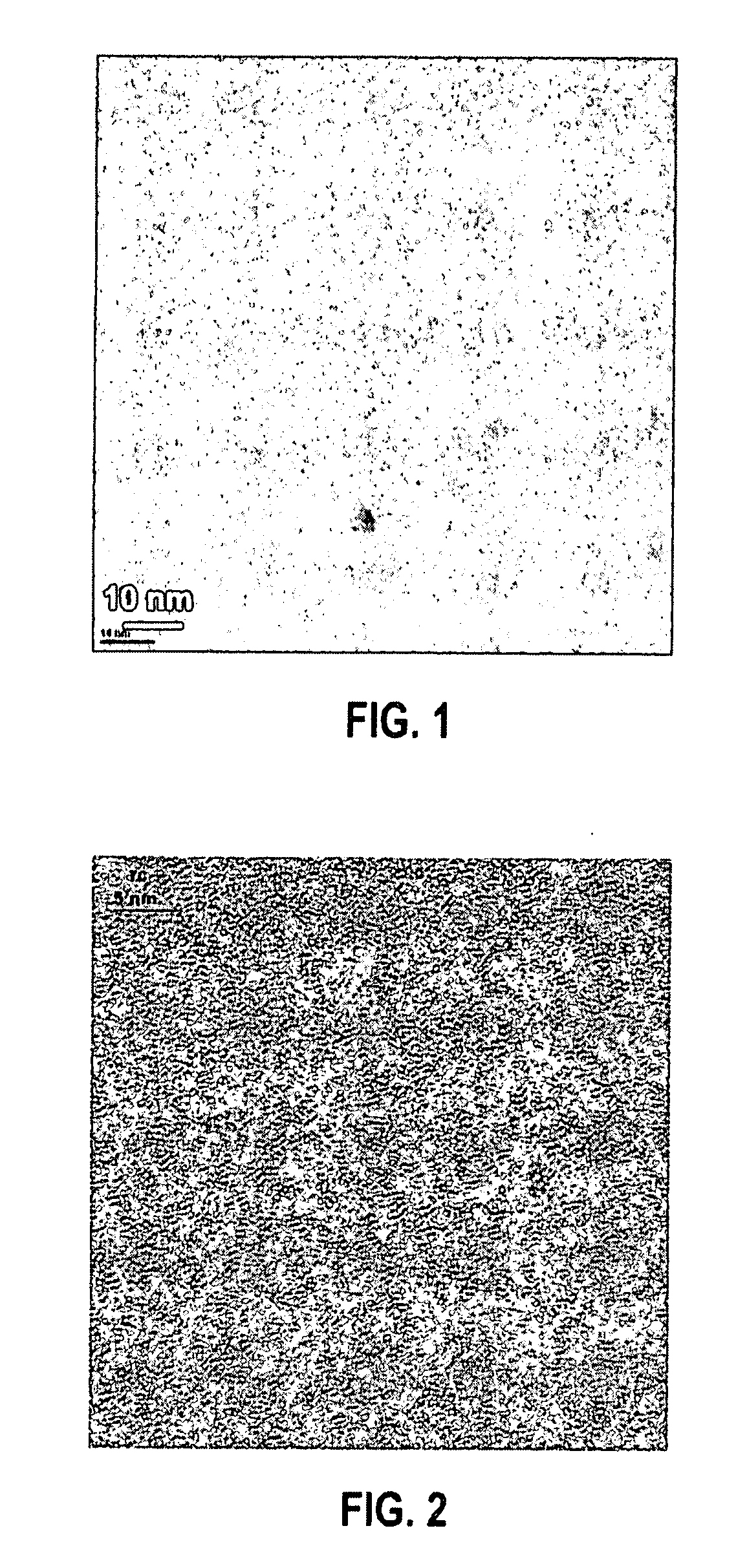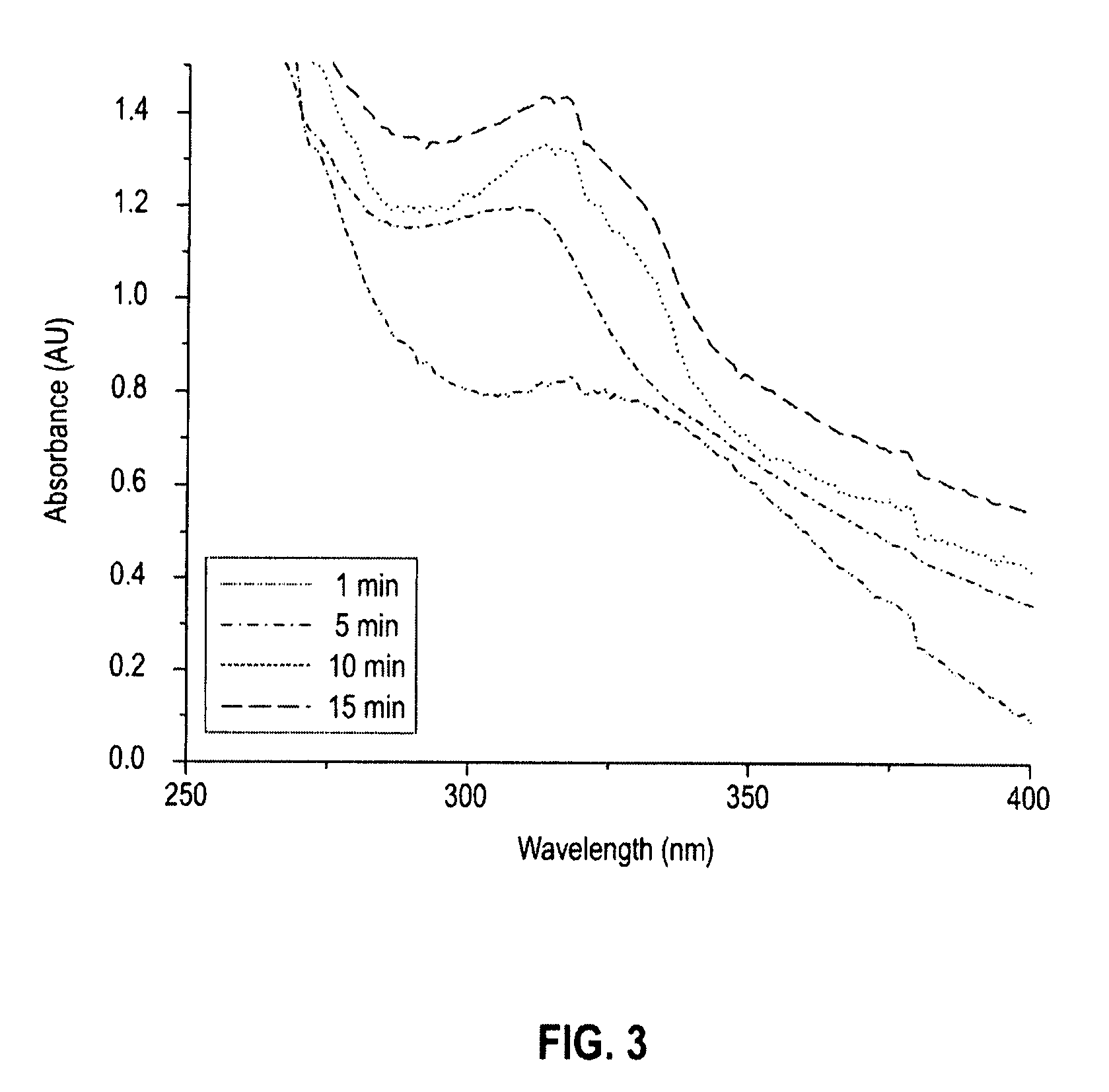Inorganic Metal Chalcogen Cluster Precursors and Methods for Forming Colloidal Metal Chalcogenide Nanoparticles Using the Same
a metal chalcogenide and nanoparticle technology, applied in the field of inorganic metal chalcogen cluster precursors and methods for forming colloidal metal chalcogenide nanoparticles, can solve the problems of difficult identification of conditions and precursors, limited success in using analogous synthetic methods for other metal chalcogenides, and high cos
- Summary
- Abstract
- Description
- Claims
- Application Information
AI Technical Summary
Benefits of technology
Problems solved by technology
Method used
Image
Examples
example
[0038]In this example, GeSex nanoparticles were prepared using an inorganic Ge—Se cluster precursor. To prepare the precursor, equimolar amounts of Ge(II)Se and Se were dissolved into distilled hydrazine (N2H4). After all of the Ge(II)Se and Se solids were dissolved in the hydrazine, the excess hydrazine solvent was evaporated off leaving a red, glassy solid. To prepare the nanoparticles, 70 milligrams (mg) of the above described precursor were dissolved into 3 milliliters (mL) of ethanolamine and injected into 5 mL of ethylhexanoic acid at 200° C. under flowing nitrogen. The reaction was maintained at 200° C. for a period of 2 to 40 minutes. The variation in reaction time provided different particle sizes with the longer reaction time providing the largest particle sizes. After cooling the reaction mixture to room temperature, excess ethanol was added to precipitate the nanoparticles. The nanoparticles so obtained were soluble in various non-molar solvents (e.g., toluene, chlorofor...
PUM
 Login to View More
Login to View More Abstract
Description
Claims
Application Information
 Login to View More
Login to View More - R&D Engineer
- R&D Manager
- IP Professional
- Industry Leading Data Capabilities
- Powerful AI technology
- Patent DNA Extraction
Browse by: Latest US Patents, China's latest patents, Technical Efficacy Thesaurus, Application Domain, Technology Topic, Popular Technical Reports.
© 2024 PatSnap. All rights reserved.Legal|Privacy policy|Modern Slavery Act Transparency Statement|Sitemap|About US| Contact US: help@patsnap.com










